Are Medical Alert Systems the Missing Piece in Value-Based Care Models?

Strong 8k brings an ultra-HD IPTV experience to your living room and your pocket.
Across the whole U.S region, medical experts are adopting value-based care models. The overwhelming number of medical alert systems is generated by clinical decision support systems (CDSS). It has led to inappropriate alert overrides, that may lead to unintended patient harm. The value-based care is relevant to both patients whose healthcare comes via government programs, such as Medicaid, Medicare, and Veterans Health Administration facilities, and those who receive care privately.
These systems, once regarded as emergency-only devices for the elderly, are now becoming a strategic asset in the broader shift toward proactive, patient-centered care. In this evolving narrative, C-suite leaders, startup entrepreneurs, and healthcare managers are re-evaluating the role of medical alert systems as a key lever in unlocking the full potential of value-based care.
The Convergence of Technology and Accountability
The transition from fee-for-service to value-based care models is fundamentally about accountability—hospitals and health systems are rewarded for keeping patients healthy, not just treating them when they're sick. This shift demands real-time data, early intervention, and patient empowerment. Herein lies the growing relevance of medical alert systems.
Modern medical alert systems go beyond panic buttons. With GPS tracking, fall detection, biometric monitoring, and seamless integration with electronic health records (EHR), these tools can serve as continuous health monitors. For chronic care patients—especially seniors living independently—this technology delivers critical health insights between clinical visits.
Bridging the Gap Between Clinical and Home-Based Care
One of the biggest challenges in value-based care is maintaining continuity beyond the hospital or doctor’s office. Patients, particularly those with chronic conditions, often experience health deterioration between scheduled appointments. Medical alert systems provide a solution by enabling round-the-clock monitoring that empowers early interventions.
According to a report by MarketsandMarkets, the global personal emergency response systems (PERS) market is expected to grow from $6.3 billion in 2022 to $9.4 billion by 2027, at a CAGR of 8.4%. This signals the growing role of these systems not only in personal safety but in structured healthcare delivery frameworks.
When connected to care management teams, medical alert systems can trigger alerts that allow healthcare providers to act before small issues escalate into hospital admissions. This proactive response fits seamlessly into the goals of value-based care: improving outcomes, reducing costs, and enhancing patient satisfaction.
ROI for Providers and Payers
Beyond patient health, medical alert systems can also generate measurable returns for providers and insurers participating in value-based care arrangements. Avoidable hospitalizations are costly—not only financially but in the context of performance-based metrics.
In a Kaiser Permanente study, implementation of remote patient monitoring tools led to a 50% reduction in hospital readmissions for heart failure patients. While not all remote tools are the same, medical alert systems can contribute to similar outcomes when used strategically within care plans.
Furthermore, these systems offer detailed incident reports and usage analytics that inform population health strategies. They can identify trends in patient behavior or symptoms, helping care coordinators adjust treatments or follow-up schedules.
Supporting the Aging Population
As the population ages, the demand for healthcare services will surge. A recent report by the Administration for Community Living projected that adults over 65 will make up 21.6% of the population by 2040. This demographic shift poses both a challenge and an opportunity for healthcare delivery models.
Medical alert systems are uniquely suited to serve this group. They enable aging individuals to remain in their homes longer without compromising their safety, aligning with the objectives of aging-in-place initiatives. By preventing injuries from becoming emergencies, these systems reduce reliance on acute care services and support population-level health improvements.
Integrating Medical Alert Systems Into Health IT Ecosystems
For healthcare leaders, the question is no longer whether medical alert systems are useful, but how to integrate them effectively into existing health IT ecosystems. Strategic partnerships with alert system providers are emerging as a key trend. These collaborations allow health systems to access data in real-time and deliver more personalized care.
Entrepreneurial startups are also entering the scene, offering white-labeled or co-branded alert solutions that can be customized to the needs of large healthcare providers. From wearable tech companies to AI-based monitoring platforms, innovation is reshaping how medical alert systems are perceived—and deployed.
Overcoming Adoption Barriers
Despite the promise, adoption isn’t without challenges. Issues related to interoperability, data privacy, and upfront costs can deter institutions from scaling medical alert systems programs. However, these hurdles are not insurmountable.
Forward-thinking healthcare managers are piloting small-scale programs with measurable KPIs. By demonstrating reductions in readmissions or improvements in patient adherence, these initiatives can justify broader investments.
Moreover, as Medicare Advantage plans expand their coverage of home-based technologies, the financial feasibility of deploying medical alert systems across larger populations is improving.
A Shift from Reactive to Predictive Care
Perhaps the most transformative impact of medical alert systems lies in their ability to shift care from reactive to predictive. Instead of waiting for patients to report issues—or worse, present at the emergency room—providers can intervene based on real-time alerts.
This model of care reduces provider burden, limits unnecessary utilization, and empowers patients to participate in their health management. For startup founders and C-suite decision-makers, the takeaway is clear: investing in the right alert technologies today can create outsized returns tomorrow.
Conclusion
As value-based care becomes the dominant paradigm in healthcare delivery, success will depend on how well providers extend their reach beyond traditional care settings. Medical alert systems offer a practical, scalable, and data-rich way to do just that.
They are not a silver bullet, but in combination with broader remote care and digital health initiatives, they may indeed be the missing piece that connects the dots in a fragmented care continuum. For business leaders, innovators, and healthcare executives aiming to create meaningful impact, it’s time to move medical alert systems from the periphery to the core of strategic planning.
Uncover the latest trends and insights with our articles on Visionary Vogues
Note: IndiBlogHub features both user-submitted and editorial content. We do not verify third-party contributions. Read our Disclaimer and Privacy Policyfor details.







